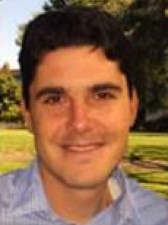Chemistry and Biochemistry
Professor
The overarching goal of the Tezcan Lab is to create and understand biological complexity through chemical and protein design approaches. Our research is motivated by the fact that proteins are the most versatile building blocks for the construction of biological machines (e.g., photosystem II, nitrogenase and cytochrome c oxidase) and advanced scaffolding materials (e.g., collagen superstructures, microtubules, viruses) that provide the necessary molecular components to sustain the complexity of living systems. However, the ability of laboratory scientists to control the self-assembly of proteins or to use them as synthetic building blocks has been limited owing to the chemical and structural complexity/heterogeneity of protein molecules. Inspired by fundamental principles of inorganic coordination chemistry and supramolecular chemistry, our group develops new chemical strategies for the construction of complex protein assemblies with sophisticated structures and physicochemical properties, and integrate such systems into living systems.
In parallel, we are interested in understanding the molecular details of biological nitrogen fixation. The conversion of molecular nitrogen into bioavailable forms such as ammonia is essential for the biosynthesis of amino and nucleic acids, as well as the production of fertilizers and countless industrial chemicals. The extreme conditions required by the industrial nitrogen fixation processes, however, translate into an immense dependence on fossil fuels and account for 1-2% of all human energy consumption. Our goal in this project is to elucidate the molecular mechanism of nitrogenase, a redox-metalloenzyme that catalyzes nitrogen fixation at ambient conditions. In particular, we aim to understand why and how ATP-hydrolysis is involved in nitrogen fixation, and use this knowledge to drive the nitrogenase reaction by using light or electrochemical energy instead of ATP hydrolysis.
Work by the Tezcan Group spans all areas of chemistry and utilizes a diverse array of tools ranging from molecular biology, chemical synthesis, polymer science, and computational chemistry to X-ray crystallography, electron microscopy, spectroscopy and advanced materials characterization techniques.
Bio
Akif Tezcan, a bioinorganic chemist and the Leslie Orgel Faculty Scholar at UC San Diego, holds the position of Professor of Chemistry and Biochemistry. His research team at UCSD is dedicated to the development of chemical tools and strategies aimed at exploring biological nitrogen fixation, designing functional proteins and enzymes, and creating novel biological materials.
Akif's educational journey began at the German High School in Istanbul and continued at Macalester College in St. Paul, MN, where he pursued majors in chemistry and biology. During this time, he conducted research on the rotational dynamics of transitional metal hydrides. His academic path led him to a Ph.D. in chemistry at Caltech under the mentorship of Prof. Harry Gray, where he delved into the folding kinetics and interprotein electron transfer dynamics of metalloproteins, earning the Herbert McKoy Award for outstanding contributions to chemistry. As a Helen Hay Whitney fellow during his postdoctoral studies in Prof. Doug Rees's laboratory at Caltech, Akif focused on energy transduction mechanisms in biological nitrogen fixation. The research program led by Akif and his group at UC San Diego has garnered recognition through various accolades, including the NSF CAREER, Sloan Fellowship, Beckman Young Investigator Award, Frasch Foundation Award, Saltman and Swift Lectureships, and the Early Career Award from the Society of Biological Inorganic Chemistry.
